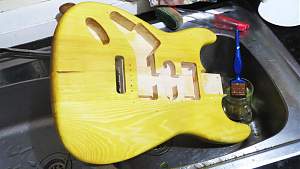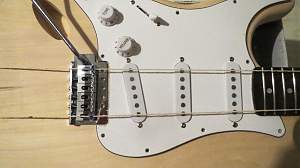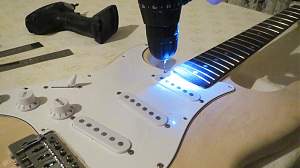Yes; I haven't finished it yet. It's got to have the tips carved to look like platypus claws. (The other advantage of doing the headstock re-shaping with the neck mounted on a board is that you can easily duplicate the pattern by using the same holesaw guide holes).
My plan is to finish the claw tips in black gloss enamel, and then stain the top brown using inkjet printer ink. By the way, I did the initial yellow staining with yellow inkjet ink last night:

That was done with just 2ml of yellow refill ink in about 25ml of methylated spirits and 25ml water mixture. I'm going to do a waxed finish, but it should also work with sprayed clear lacquer. The great thing about inkjet ink is that you can mix up just about any colour with it.








 Reply With Quote
Reply With Quote

